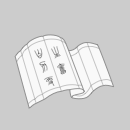
材料的形变与再结晶
全新正版 极速发货
¥ 42.62 5.5折 ¥ 78 全新
仅1件
送至北京市朝阳区
运费快递 ¥8.40
作者顾新福,杨平 编
出版社中国建材工业出版社
ISBN9787516032374
出版时间2021-08
装帧平装
开本16开
定价78元
货号1202463550
上书时间2024-12-22
评价16990好评率 99.94%
- 最新上架
商品详情
- 品相描述:全新
- 商品描述
-
目录
Part One
1 Introduction
1.1 Why this book
1.1.1 Deformation-recrystallization and their microstructure
1.1.2 Examples of industrial applications
1.2 Relationship between this course and other major courses
1.3 Contents in this book
1.4 How to learn
1.5 Exercises
2 Deformation of materials
2.1 Learning objectives
2.2 Introduction
2.3 Plastic deformation in a single crystal
2.3.1 Slip systems
2.3.2 Slip lines and slip bands
2.3.3 Schmid s law
2.3.4 Cross slip
2.3.5 Multiple-slip
2.3.6 Determine the slip system
2.3.7 Rotation of crystals during tension and compression
2.3.8 Stress-strain curve of single crystals
2.3.9 Upper-lower yielding effects
2.3.10 Work hardening
2.3.11 Mechanical twinning
2.3.12 Slip vs twinning
2.3.13 Stress-strain curve during twinning
2.4 Plastic deformation in polycrystalline materials
2.4.1 Features of poly-crystalline deformation and role of grain boundary
2.4.2 Deformation of bi-crystals
2.4.3 Macro-accommodation. five independent slip systems
2.4.4 Deformed microstructure
2.4.5 HalI-Petch relationship
2.5 Deformation texture
2.5.1 Description of crystal orientation
2.5.2 Orientation distribution
2.5.3 Classification of deformation textures
2.6 Deformation of polymers
2.6.1 Amorphous thermoplastics
2.6.2 Semi-crystalline thermoplastics
2.7 Summary
2.8 Exercises
Part Two
3 Recrystallization of materials
3.1 Learning objectives
3.2 Introduction
3.3 Thermodynamics consideration
3.4 Recovery of deformed metals
3.4 Basic features
3.4 Recoveries of physical and mechanical properties
3.4 Kinetics of recovery
3.4 Microstructure evolution during recovery
3.5 Recrystallization of materials
3.5 Introduction
3.5 Basic laws of recrystallization
3.5 Recrystallization kinetics
3.5 Factors affecting the kinetics of recrystallization
3.5 Nucleation and growth during recrystallization
3.5 Effects of secondary particles
3.6 Grain growth after recrystallization
3.6.1 Introduction
3.6.2 Normal grain growth and annealing twins
3.6.3 Abnormal grain growth or secondary recrystaltization
3.7 Recrystallization textures and their control
3.7.1 Typical recrystallization textures in metals and alloys
3.7.2 Texture evolution during grain growth
3.7.3 Theories of recrystallization texture
3.7.4 Applications
3.8 Summary
3.9 Exercises
4 Hot deformation of materials
4.1 Learning objectives
4.2 Introduction
4.3 Dynamic recovery
4.3.1 Stress-strain curve in dynamic recovery
4.3.2 Mechanism of microstructure evolution during recovery
4.4 Dynamic recrystallization
4.4.1 Stress-strain curve in dynamic recrystallization
4.4.2 Dynamically recrystallized microstructure
4.4.3 Z-parameter and its relation with hot-deformed microstructure
4.4.4 Characteristics of dynamic recrystallization
4.4.5 Recrystallization in non-metallic inorganic materials
4.4.6 Texture formation during hot deformation
4.5 Creep
4.5.1 Introduction
4.5.2 The creep curve
4.5.3 Creep mechanisms
4.6 Deformation mechanism maps
4.7 Superplasticity
4.8 Summary
4.9 Exercises
Part Three
5 Analytical techniques
5.1 Learning objectives
5.2 Introduction
5.3 Description of orientation
5.3.1 Coordinate systems
5.3.2 Rotation (orientation) matrix
5.3.3 Crystallographically-related solutions
5.4 Stereographic projection and pole figure
5.4.1 Stereographic projection
5.4.2 Inverse pole figure
5.5 Techniques to determine crystallographic textures
5.6 Representations of texture by EBSD
5.6.1 Pole figure from EBSD
5.6.2 Inverse pole figure from EBSD
5.6.3 ODF from EBSD
5.7 Summary
……
内容摘要
Professor Yang Ping and I are in charge of the subject " deformation and recrystallization", thus we are responsible for writing the English textbook for it. We are also working on the research field " Fundamentals of materials science and anisotropic properties of materials" controlled mainly by deformation / recrystallization or phase transformation for decades. Therefore, we are qualified for writing the textbook entitled"Deformation and Recrystallization in Solid Materials" .
The lecture notes have been finished around 2016 mainly by Professor Yang Ping. I modified and enhanced them in the following years during teaching. Now, the textbook includes six chapters and is scheduled for 16 teaching hours. Exercises and examples for each chapter are prepared. We also added recent advance in deformation and recrystallization processes obtained by Electron Backscatter Diffraction (EBSD) method. The last two chapters, analytical techniques and softwares, are designed for the off-class extending reading.
相关推荐
为你推荐

毛泽东选集合订一卷本 带皮包
八五品北京
¥2000.00

吴让之书画篆刻与研究
全新杭州
¥980.00

中药药理研究方法学
九品南充
¥10.00

小16开紫红布面精装《毛泽东选集》1-4卷(其中1-3卷带书衣)。(H-01467)详见图片
八品洛阳
¥2860.00

三世书
七五品广州
¥30.00

天蚕神功6本全
七品南通
¥30.00

毛泽东选集(1-4卷,军版,都是1968年中国人民解放军战士出版社第一次印刷,同版同印,804号)
八五品太原
¥688.00

Advanced Mathematical Methods for Scientists and Engineers 科技人员用的高等数学方法
九品镇江
¥388.00

金陵春梦
八五品重庆
¥160.00

民国版:校订定盦全集(卷四、卷五/卷六、卷七/卷十、附定盫年谱)共3册
二品泉州
¥238.00

极少罕见珍藏版珍贵的精美五六十年代 大且厚本 宝书 原装布面金字《毛泽东选集》繁体竖版一套四卷全 带少见毛主席双耳标准像 北京新华印刷厂印刷 1952年北京印 人民出版社出版 解放初 印数稀少 没有定价 少部分发 光芒四射具有时代特征保存完美 如新 请看图片 可珍藏馈赠展览展示为一体的收藏精品,值得珍藏时代特征性强集藏展示难得可贵
九品金华
¥3790.00

军事文选
九品北京
¥100.00

毛泽东选集全四卷
八五品长治
¥400.00

蒙文
八五品唐山
¥98.00

最高指示 大海航行靠舵手
八五品南京
¥60.00

毛泽东选集 头像
八五品烟台
¥358.00

关中呓言1(戒尘法师)
六五品太原
¥11888.00

广西一览 民国版 全书有水印 不影响翻阅做资料 实物图 品如图 自鉴 要求太高者勿购 感谢 货号77-4
六五品贵阳
¥3800.00

连环画典藏 范生福作品 4册全套32开大精装连环画
全新湖州
¥90.00

春歌集 浩然 1973年印刷 彩色插图
八五品鞍山
¥30.00
— 没有更多了 —
微信扫码逛孔网
无需下载























正版
不错